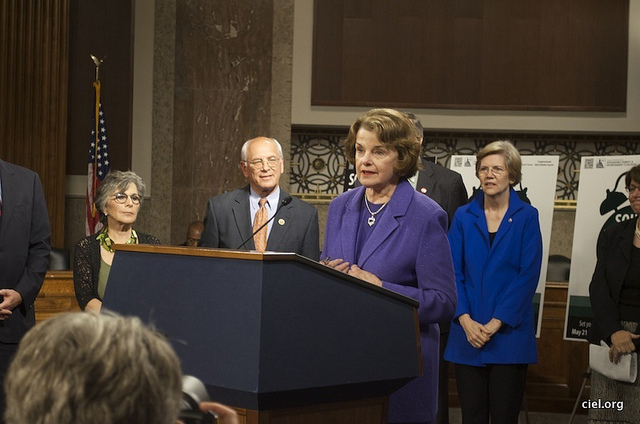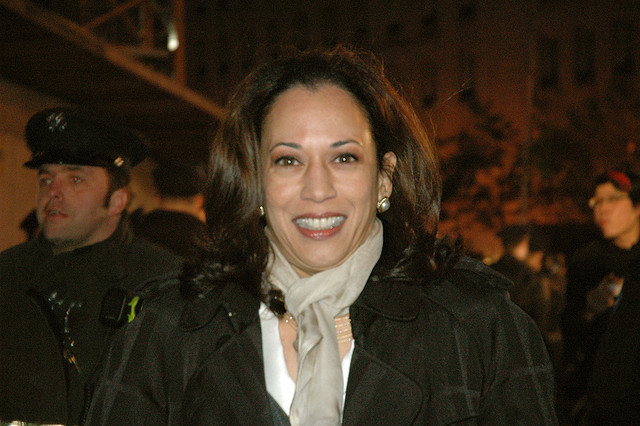California And The Search For A Female Governor

Yet no woman has ever been elected governor.
“When people think of a leadership, executive position, they have traditionally thought of a man. And it takes a lot to move people’s thinking about that,” says Patt Morrison, author and Pulitzer Prize winning journalist for the Los Angeles Times.
Morrison highlights that the governor’s office often requires projecting an image of strength
“Ann Richards was not afraid to hoist a gun. And I think that, as a candidate in Texas, was a big point in her favor,” Morrison explained.
California isn’t an outlier. Twenty-four states total have never put a woman in the governor’s mansion.
Senator Dianne Feinstein lost her 1990 bid for Governor by about 300,000 votes. No other female candidate has come closer.
Sherry Bebitch Jeffe, political analyst for KNBC, Los Angeles, believes gender played little to no role in the losses of recent general election candidates.
“Kathleen Brown was already measuring the drapes in the White House,” says Jeffe. “It was basically assumed that she would win the governorship.”
Brown ran in 1994 against Pete Wilson, the man who defeated Sen. Feinstein.
“She had a lousy campaign. She had a lousy campaign manager. She was running on fumes the last two weeks of the election campaign,” Jeffe explained.
Meg Whitman wasn’t considered the front-runner in her 2010 bid, and lost to the better-known Jerry Brown.
SEE ALSO: Governor's Race Heats Up As Whitman Attacks Brown
Kimberly Ellis, executive director of Emerge California, a non-profit that recruits and trains women to run for office, says that in order to elect a female governor, “we need to see more women running.”
Emerge CA works to create a pipeline of qualified female candidates by training them to start at the local level at City Council, school board, water board in hopes of creating a bench that can not only break into the governorship, but one that can also elect more women in all areas of state government.
Building the bench isn’t always easy.
“Running for Assembly here in California or in the bay area can run you from one to three million dollars,” says Ellis. “So running a campaign here is very different from running a campaign in Maine.”

According to a survey of female state legislators by the non-partisan Political Parity, an organization committed to electing women at the national level, 62 percent of women said fundraising was their biggest obstacle to running for higher office. The same survey found that only 18 percent had seriously considered a run for higher office.
In 1990, California approved Proposition 140 largely in an effort to recruit more women and minorities to the State Legislature. The amendment imposed stricter term limits aimed at undermining the advantages held by incumbents.
The legislation “hasn’t really worked that way,” says Kathy Kleeman, senior communications officer at the Rutgers Center for American Women and Politics.
“It took women a long time to achieve certain levels of power, and then if you immediately get termed out, then you have to go out and recruit more women.”
According to a 2004 report by the Public Policy Institute of California, a non-profit think tank focused on informing policy throughout the state, the amount of women elected to the Assembly and Senate spiked in the years immediately after Prop 140. 25 new female Assemblymembers were elected from 1990 to 1995.
The report says that most of those pickups were more likely due to changing demographics, and that term limits had a more limited effect. The PPIC concludes that women picked up nine Assembly seats as a direct result of Prop 140.
SEE ALSO: October 8th Marks Beginning Of November General Election Month
Not much has changed since then.
Women typically hold between 27 and 30 percent of state legislative offices, largely because they “don’t run,” says Kleeman.

She argues that when women do run, they’re no more or less likely to win than their male counterparts.
In “He Runs, She Runs: Why Gender Stereotypes Do Not Harm Women Candidates,” Dartmouth government researcher Deborah Brooks Jordan writes that while “gender stereotypes still do matter in various ways,” there’s no evidence that women face tougher odds at the ballot.
The odds of a female governor being elected could increase dramatically in 2018.
Jordan also argues that this creates a cycle where women run less because think they’ll have a tougher time winning, which in turn leads to fewer women being elected.
A 2014 article published in the American Politics Research Journal shows that women who do run for governor tend to focus the beginning and end of their campaigns on “masculine issues” like crime and economics in order to look tougher. Research by Jordan and other scholars suggests that maybe that isn’t necessary.
California Attorney General Kamala Harris is the state’s most prominent law enforcer. She’s popular here, and is slowly carving out a place for herself on the national stage. In 2012, she gave a speech at the 2012 Democratic National Convention.
Should she run, she’d be one of the most promising candidates in the field.
Governor Pat Brown was Attorney General, Jerry Brown was Attorney General,” says Morrison. “Any doubts people may have, ‘would she be tough enough,’ might be assuaged.”



